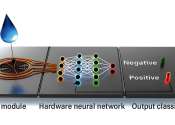Honey holds potential for making brain-like computer chips
Honey might be a sweet solution for developing environmentally friendly components for neuromorphic computers, systems designed to mimic the neurons and synapses found in the human brain.
Apr 5, 2022
0
484









